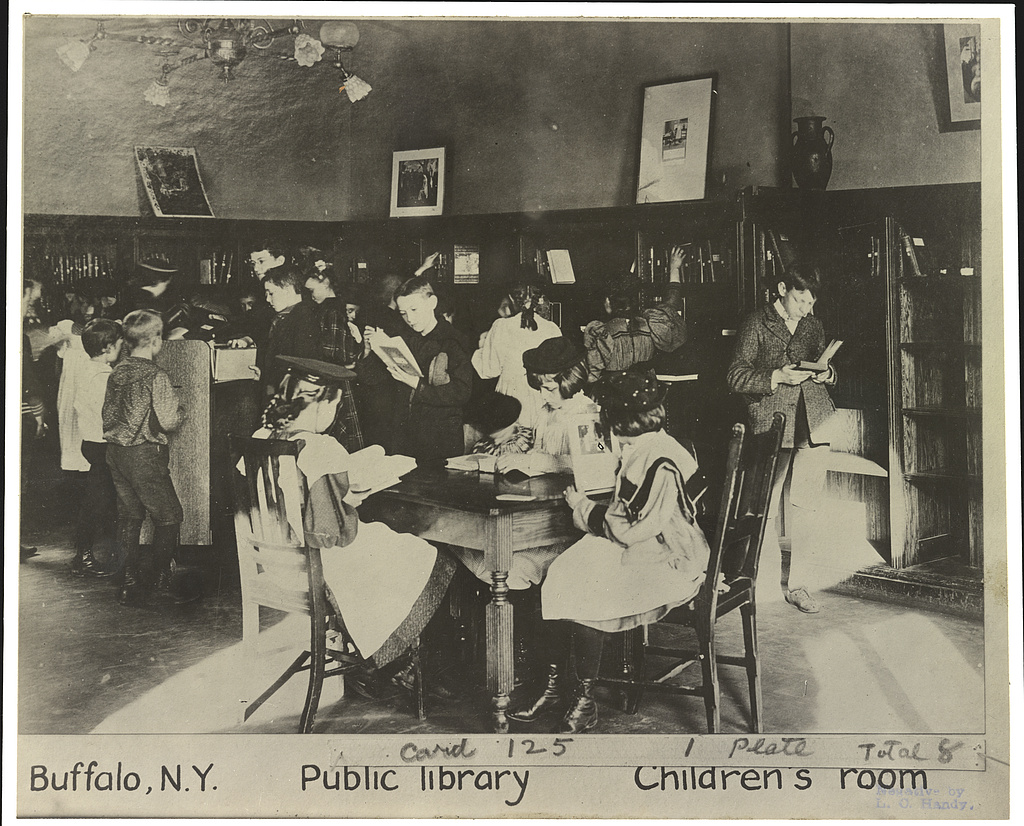
. Buffalo New York, ca. 1900. [Buffalo, New York] [Photograph] Retrieved from the Library of Congress
Libraries were important spaces for children during the early 20th century. They were places for children to explore a great variety of interests without needing to go anywhere else, and librarians encouraged this exploration through reading, while injecting their personal beliefs through their recommendations and book choices. The construction of space in the library separated children from adults, providing them with their own resources and space to be themselves, free of control outside the library rules and the librarians. Libraries were also important space for education, as children came there to read, strengthening their literary skills. Children experience childhood in different ways based off their race and whether or not they are immigrants, so this resource was especially important to different groups, as immigrant children were American-ized through the library and African American children were exposed to different black characters, that either reinforced or broke through racist stereotypes, depending on the library. The ability for the library to make these impacts on children relied heavily on its space being open to the public, and its accessibility to children. More research could be done into rural libraries, as I saw disparities between them and city libraries, but did not get the opportunity to explore this theme further. It would be especially interesting research as literacy rates were lower and people were poorer in the country, but would be difficult to find data on. Libraries were not just places of education for children, but entertaining spaces for community to gather and children to learn through that experience as well.